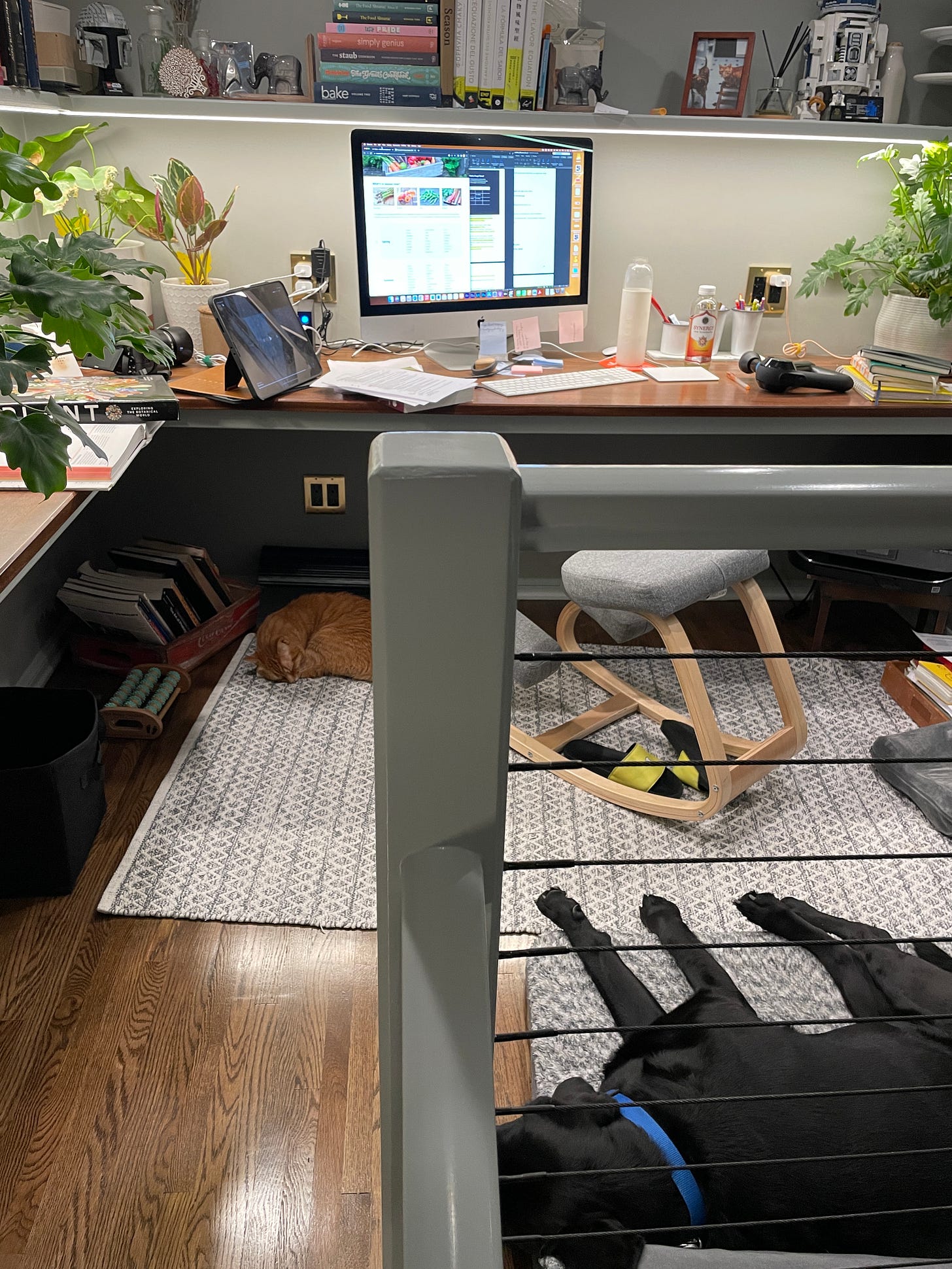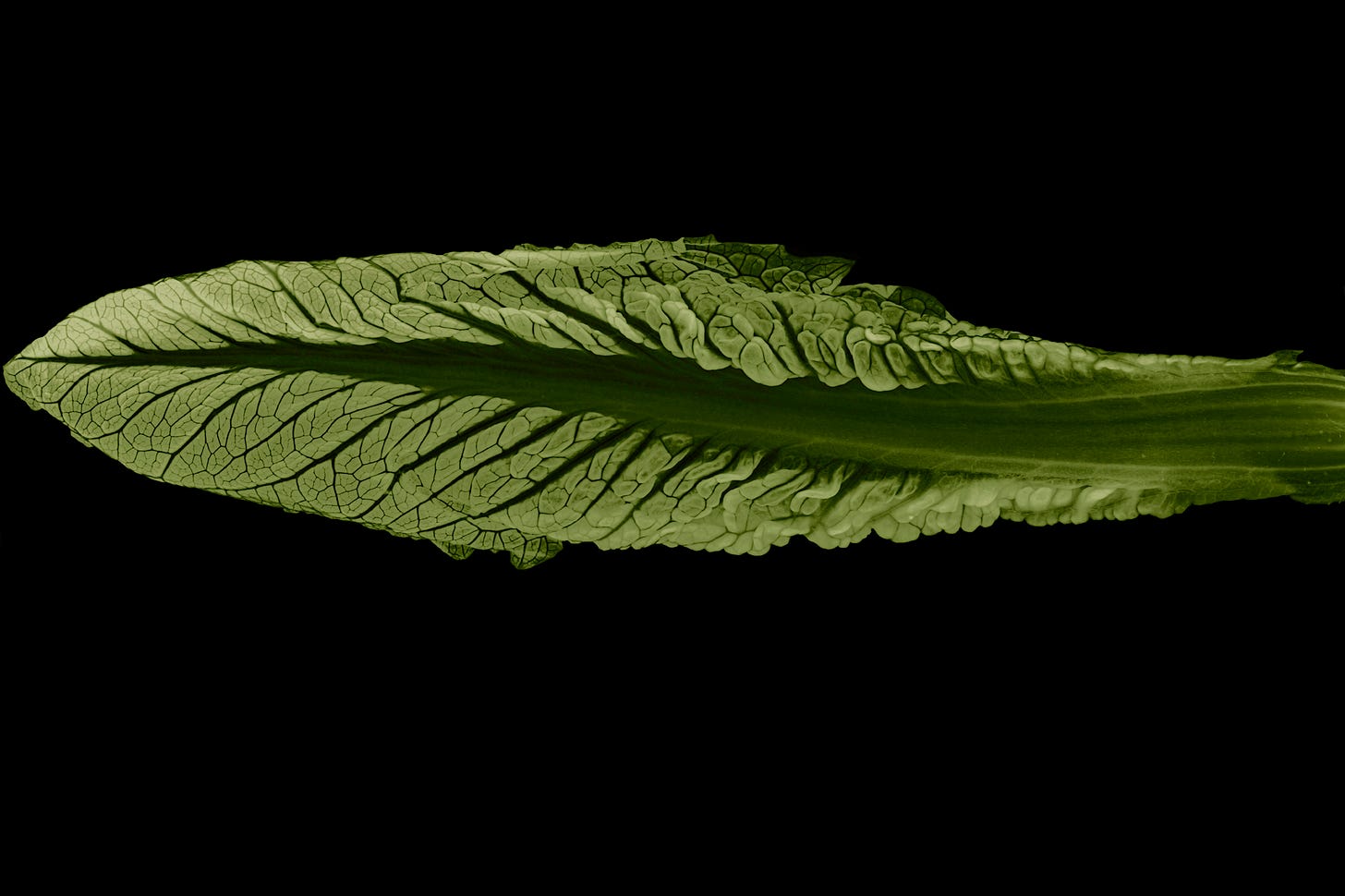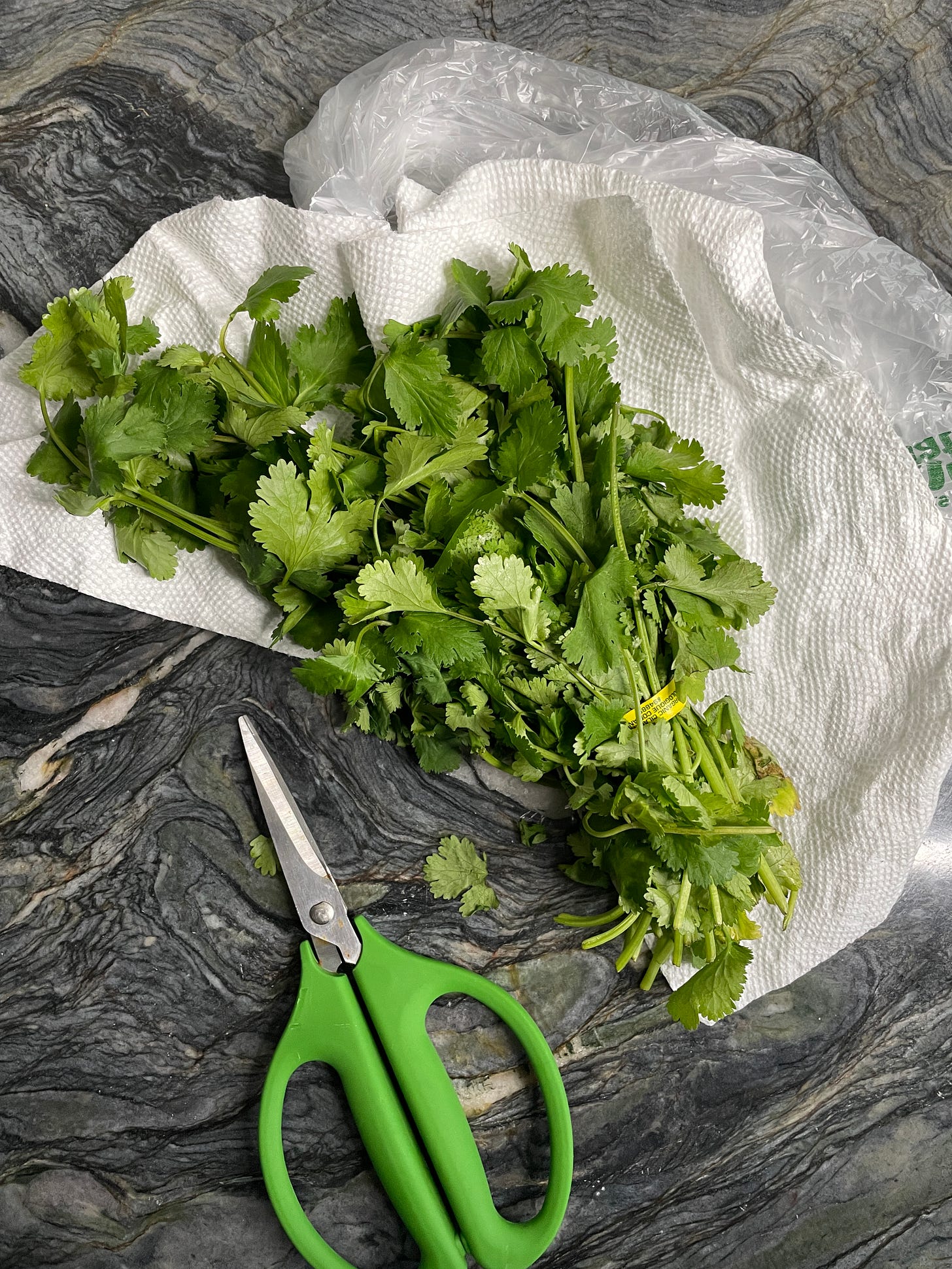How to Save A Salad
The Science of Salad Storage
For the past week, I’ve been working on my cookbook's final round of edits and shooting many different photo styles for the cover. When deep into cookbook work, especially at this last stage, I need to manage my time; and focus on quick meals, especially salads. Salads are a lifesaver, and they’re easy to put together and a great way to clean out the refrigerator and pantry. Let’s face it; we’ve all been there. Extra bags of salad greens, herbs that go bad quickly, and the worst – leftover soggy salads with wilted slimy greens. In this edition of The Flavor Files, I’ll address some of the issues salads face and how to do your best to save them.
Salad Science 101
Once a fruit, vegetable, or salad leaf is removed from a plant, the clock starts to tick. It is now on a journey to self-destruct, and the only thing to do is to slow down the inevitable as much as possible.
Plants breathe and produce carbon dioxide and water by breaking down the sugars stored inside their cells. This not only affects the texture and flavor of the produce, but the water collects and leads to rotting. Fruits like apples, peaches, tomatoes, bell peppers, etc., produce a plant hormone that’s also a gas called ethylene, and some products like broccoli, lettuce, and onions are sensitive to this gas. The signs from ethylene exposure will be apparent; e.g., broccoli florets and green leafy vegetables turn yellow.
The Environment
Humidity, temperature, and light all affect the storage of produce. There’s a delicate balance between humidity and temperature; too much or too little can harm the quality of the produce. Most refrigerators maintain the humidity between 60 to 75 % at 55F/13C. The crisper drawer is your friend! This part of your refrigerator is designed to increase your produce's life. Produce can go bad when it is exposed to light for too long. Leave a tomato, potato, or onion directly by a well-lit window for a few days, the tomato will go bad, and you’ll start to see the seeds inside germinate.
Assemble Before You Eat
A freshly diced fruit or vegetable will release naturally present sugars, salts, acids, enzymes, and other substances stored inside its cells. Take a freshly put-together grilled peach and spinach salad; the peach juices will make the spinach wilt and turn slimy within a few hours. I prefer to store cut fruit and vegetables in separate containers and only toss them together when ready to eat.
Dress Before You Eat
In its simplest form, a salad dressing comprises some water-based acid like vinegar or lemon juice and oil. Ingredients like sugar and salt are added for flavor. If stored long enough, some of these ingredients will destroy the delicate texture of the salad leaves and vegetables. Acids will break down the structure of vegetables; sugar and salt are osmotic agents and will draw out the water inside the vegetables. Water-rich vegetables, like cucumbers and tomatoes, will release a lot of water and make a soggy salad. Tender salad leaves like spinach and microgreens will turn slimy. There are exceptions to this; tougher salad leaves like kale will turn more tender, improving their texture and flavor. For this reason, it’s best to dress a salad right before you eat it or consume it within a short period.
A Few General Tips for Storing Salads
Keep fresh produce away from light and in a cool, dark place.
If cut, store the produce in an airtight container in the refrigerator. Group similar things together. I keep all fruit in one container, leaf vegetables in another, and cut vegetables in their container.
Vacuum storage food containers have become a major tool in my kitchen. They suck out the air and reduce the rate at which food spoils.
I save most of the silica sachets that come with some prepackaged foods and reuse them to reduce moisture.
A salad spinner is a great tool to eliminate excess moisture from washed leafy vegetables. If you don’t own one, pat the leaves dry with a clean towel. A salad spinner bowl is also great for storing fresh produce in the refrigerator.
Dry kitchen paper towels are a great way to wick moisture away from fresh herbs and vegetables during storage. Change the towels often.
If your refrigerator has an air filter and an ethylene gas removal kit, ensure they aren’t expired and replace them if they are.
Glass containers are always better than plastic containers. They’re better for the environment and you. Stainless steel containers are also great but can’t be heated, unlike microwaveable glass containers.
If I’ve accidentally washed my greens and don’t need to use them all, I’ll pat and air dry them before storing them in the refrigerator.
Prepare only how much you need, and store undressed salads separate from the dressing. Store “wet” produce away from leafy greens like cut fruits and vegetables. Fruit and vegetables rich in water, salt, sugar, and acids, like cucumbers, jícama, tomatoes, apples, and peaches, should be either cut before use or stored separately.
In terms of nutrition, vitamin content decreases as soon as the produce is removed from the plant. Vitamins B and C are the first to go. The amount of vitamin and nutrient loss depends on the type of vegetable and the storage conditions.
When unsure: If it smells bad and looks bad, compost.
UC Davis's Post Harvest Center has extensive vegetable and fruit storage resources. I turn to it often for ideas to improve and update my food storage methods.
Salad Q + A
Thank you for sending your salad storage questions my way. Let’s jump straight into them.
Where and how do you store your cut leafy greens? Mine always go bad.
I store them in airtight containers wrapped loosely with a few dry paper towels. The towels help wick away the moisture and allow the leaves last longer.
How to store chillies in the fridge?
The thicker the skin of the chilli, e.g., jalapeno, the longer it lasts. An airtight container is excellent for thin-skinned chillies, e.g., bird’s eye, while a paper bag works for thicker-skinned varieties. Cut chillies won’t last as long, and storing them in an airtight container with a dry paper towel is a big help.
How to keep herbs fresh?
Whenever I buy fresh herbs, I treat them like freshly cut flower arrangements. I trim the stems' base, then immerse them in a small jug of fresh water and stick it in the refrigerator. Change the water daily. Discarding any yellow or damaged pieces from a bunch of herbs before storage is always a good idea. If the herbs are chopped, I find keeping them on a bed of dry paper towels in an airtight container in the fridge a great way to increase their shelf life.
How to make leftover salads last longer
Now, this is a tough one; it all depends on the type of salad. Not all salads taste good a day later or even after a few hours. To reuse an example from earlier, the peach and spinach salad or a cucumber salad will be the first to go bad. The juicier the fruit or vegetable, the soggier the salad turns with time. Another option is to dress as much salad as you need and store the undressed salad and dressing separately.
What’s the best way to store a cut avocado?
Rinse and scrub the skin of the avocado properly under running water to remove dirt and debris. Once the avocado is cut, drizzle fresh lemon or lime juice on the surface of the avocado you plan to store. Wrap the fruit tightly in plastic wrap and store it in the refrigerator. The acid from the lemon will help reduce the risk of browning, and the cold temperatures will slow down the polyphenol enzyme responsible for browning. Avoid the popular TikTok trend to store cut avocados submerged in water; there’s a high likelihood that it will help harmful bacteria grow and spread. The FDA has been vocal against this viral TikTok method.
Are wilted salad leaves salvageable?
If the salad is already dressed and the leaves are wilted, it’s most likely not salvageable. If salad vegetables turn watery, some of that liquid can be drained and discarded, but remember you’ll lose a lot of the flavor and nutrients.
Where should I lay paper towels when trying to save salads?
Wrap herbs and leaves with paper towels. Lining the base of the storage container with paper towels is more than sufficient to grab the moisture.
How can I chop, prep, and store salads for my work lunches in advance?
In general, don’t season or dress anything before use. Store cut produce separately and similar types of fruits and vegetables together, e.g., I keep the arugula and lettuce in one container. Watery vegetables like cucumbers and bell peppers can be stored together. I prefer storing cut tomatoes on their own because they contain acid and salt, affecting other vegetables' flavor and texture. Cherry and grape tomatoes are a better option than tomatoes because they don’t need to be cut.
Recipe of The Week
LETTUCE SALAD WITH SMOKED ALMONDS, DATES, AND SHALLOT VINAIGRETTE
One of my favorite salads to order at Agnes Restaurant & Cheesery in Pasadena, CA, is a fresh lettuce salad tossed with a bright shallot vinaigrette. What makes the salad extra special is the inclusion of smoked almonds and sweet dates, an unexpected combination that makes me smile every time I take a bite. This is my take on that delicious, simple salad.
Disclaimer: There are a couple of affiliate links in this newsletter, which means that I will get a small commission, at no extra cost, from every purchase you make via the link.





Nic - It's hard to convince people otherwise, but you CAN microwave in stainless, I do it all the time. You have to be careful to avoid the bowl touching the sides of the oven (I just tend to stick to smaller containers), but otherwise it works fine!
Nik, you should read Viana La Place's "Unplugged Kitchen" (William Morrow, 1996) on fatigued salads. Building on the Simonetta's legenday cookbook "A Snob in the Kitchen," La Place recommends letting a salad rest (dressed) for an hour before serving. Building on that system, I have found that severely wilted greens serve as a good basis for dressing future salads. Banish the word "slimy"; substitute "fatigué."